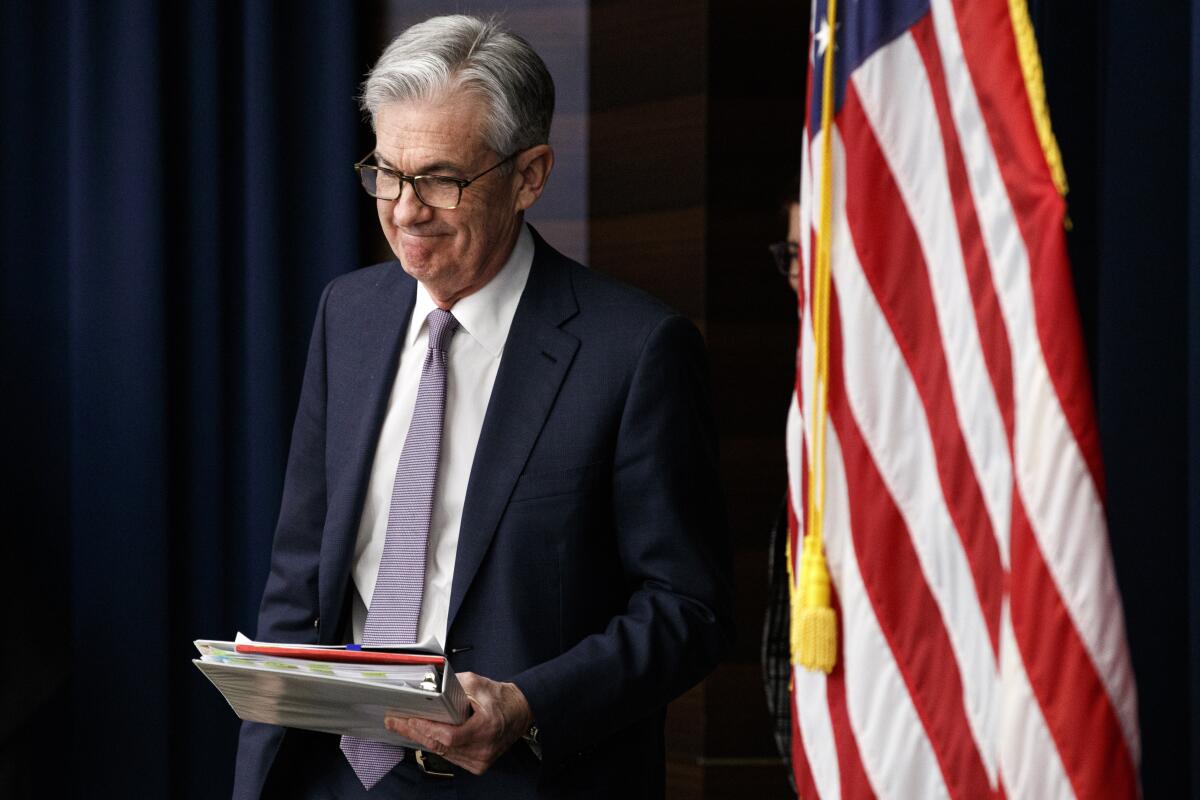Fed officials see U.S. economy as resilient despite ongoing risks

- Share via
Federal Reserve officials downplayed concerns about the effect of geopolitical uncertainty on the U.S. economy amid flaring tensions with Iran, even as a record of the central bank’s meeting last month showed that downside risks remain on their minds.
“That’s one of the great things about the U.S. economy, is it does have this resiliency to it,” Cleveland Fed President Loretta Mester said Friday in an interview on Bloomberg Television. “Obviously we can’t know what is going to happen in the Middle East at this point, and it adds to the uncertainty surrounding things, but fundamentally, the economy is sound.”
Stocks fell Friday following news that the U.S. had killed a top Iranian general in an airstrike in Baghdad, escalating tensions in the Middle East and sending oil prices soaring. And a widely followed gauge of business activity in the U.S. manufacturing sector published Friday unexpectedly dropped to the lowest level since 2009, signaling a worsening contraction.
Chicago Fed President Charles Evans’ thoughts, though, were in line with his Cleveland counterpart’s. “We’ve found that the economy can continue to grow even when manufacturing is contracting just a little bit, so I’m hopeful that we’ve got a really resilient economy at the moment,” Evans told Bloomberg TV.
The U.S. unemployment rate ticked down to 3.5% in November, matching a half-century low, and has spent most of the last two years below 4%. Yet inflation remains under the Fed’s 2% target, as it’s been throughout most of the last decade, a development that’s confounded policymakers who expected a tighter job market to put more upward pressure on consumer prices.
Evans reiterated his call for keeping interest rates low for long enough to drive inflation above the Fed’s target.
“I think at this point in the cycle we really need to get inflation up to 2%, and above 2% somewhat,” Evans said.
Robert Kaplan, president of the Dallas Fed, said he’s not looking to adjust his forecast for economic growth in the U.S. in 2020 based either on disappointing manufacturing numbers for December or the rising tensions between the U.S. and Iran.
Kaplan said in an interview that the manufacturing data were “consistent with my outlook” for slowing global growth and sluggish business investment. But he still expects strong U.S. consumer spending to drive 2% to 2.25% growth this year.
While conceding that geopolitical tensions could hurt some financial markets, he took a measured view of the risks.
“A repricing of risk assets could be healthy,” Kaplan said. “What I would watch for is a severe tightening in financial conditions, particularly the availability and cost of money.” Kaplan said he thought the Fed should hold rates steady through 2020.
“That’s subject to change, but I don’t see any reason to change that yet,” he said.
Minutes of the Fed’s Dec. 10-11 meeting released Friday showed that officials viewed the current stance of monetary policy as likely to remain appropriate “for a time” amid what they saw as persistent downside risks.
Geopolitical threats were on that list, though the headwinds from trade tensions and a potential no-deal Brexit were judged to have receded, while policymakers remained concerned about inflation running below their 2% target.
Officials had already cut interest rates three times in 2019. They left rates unchanged after their December meeting and signaled that policy would remain in force through 2020, keeping the central bank on the sidelines during the presidential election year.
More to Read
Inside the business of entertainment
The Wide Shot brings you news, analysis and insights on everything from streaming wars to production — and what it all means for the future.
You may occasionally receive promotional content from the Los Angeles Times.









